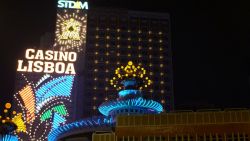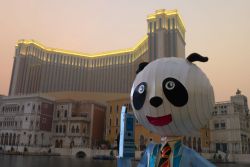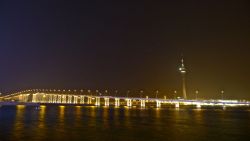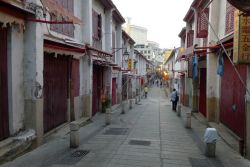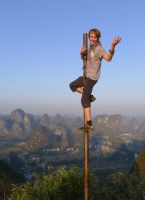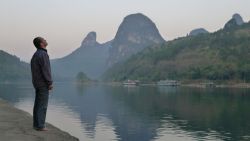A couple of words is ought to be said about casinos. I went to a few (Sands, CIty of Dreams and Venetian), did not spend any money and even grabbed a free water bottle, which I later smuggled into the Cirque Du Soleil show (that’s what I call being cheap!). Sands at 11AM Wednesday morning was an interesting sight – quite crowded with many people looking like they spent a night there. Wednesday. 11AM. Inconceivable. Next on the programme was City Of Dreams, a huge building consisting of a casino, several luxurious hotels, a concert hall and numerous shops. Very chic, very modern and very posh. House Of The Dancing Water is the show they currently have there. I did not go to that one, but the
trailer looks promising.
But the most interesting of all was Venetian. It is one gargantuan entertainment complex designed to meet your every need, if you can afford it of course. Here again you can find a hotel, an insanely long boulevard full of designer shops and top-end restaurants, Renaissance type ceiling paintings, an indoor river (with gondolas naturally) and even an artificial sky, which actually looked passable. The scale of Venetian is simply massive, you could spend days indoors without venturing outside. I could not decide whether all this luxury was awesome or way over the top. Probably a little bit of both. Now if they only made this thing more nature-like (the artificial sky and river are the first steps) and self-sustainable, we would have the first biosphere.
Anyways, Cirque Du Soleil Zaia was the reason why I went to Venetian in the first place. I found out about the show completely by accident from a German room-mate and was fortunate enough to buy one of the last tickets for the same day’s show. A bit steep price for a budget traveller in Asia, but you cannot measure a unique experience like this with money. The show was simply mind-blowing and was totally worth the price. Dancing Chinese lions, a cosmonaut, flying bicycles fueled by sparks, a floating polar bear, an Arctic yogi, romantic love – Zaia had it all. Much better than Saltimbanco which I saw last year. I whole-heartedly recommend it, if you ever get a chance to see it. Coincidentally the show marked two months of my travelling. Nice one.
